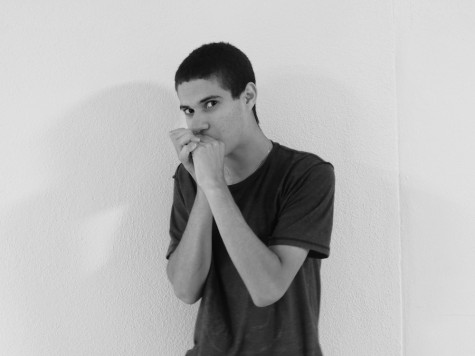Putting the “Lesson” back in “History Lesson”
Swastika use in history class has an educational value
October 29, 2014
To many, the mere thought of displaying symbols associated with the Nazis, especially in a public school environment, is easily thought of as an insensitive act.
However, Oct. 28, students of the IB history: 20th century issues displayed Nazi flags and posters in the C350 classroom as a part of a project prompting complaints to the administration.
Although it is normal to experience strong negative emotions when you see the swastika symbol, you cannot just equate its display to the actions and beliefs of the Nazis. The fact of the matter is that in its education context, it was not aimed at promoting the Nazi agenda.
The placement of these items was part of a longstanding and well-known group project on propaganda, a part of Park’s International Baccalaureate history curriculum. The directions for the project were to indoctrinate the class on one of three dictators studied throughout the semester as if the class were placed during this time period.
As a Jewish member of the class who has family members who were both killed and survived through the Holocaust, I was uncomfortable with playing the part of a Nazi. However, being that I have lived my life with little to no exposure to anti-Semitism, I very much wanted to have an understanding of how so many could stand idly by to such genocide of my ancestors and many others.
Well aware of the sensitivity that could arise to Jewish students, the teacher allowed those who did not want to participate to be excused from class. Additionally, students could freely choose what dictatorial regime to present on and groups could not discriminate based on race and ethnicity in their presentation.
During the course of the group’s presentation, they discriminated against those who did not conform with their Hitler Youth type instruction and responded by yelling and confiscating items from those who showed “weakness” and those who did not go along with their anti-Semitic beliefs.
While engrossed in the group’s presentation, I was targeted on various occasions not for my religion, but because of my nonconformity to their teaching. In fact, other Jewish students who went along with the indoctrination project were treated equally with those who played the part of “Aryans.”
The way in which we students were treated by the presenters, coupled with the propaganda posters and flags surrounding us acted as a useful educational tool to demonstrate how Hitler was able to gain appeal of the ordinary citizens.
By the end, the flags, posters and treatment evoked a very distasteful feeling. However, through this I now have a better understanding of what it must have felt to be a European Jew during that time period.
Although the addition of the Nazi flags to the presentation was intended to make a provocative statement to the class, it displayed a horrific, yet accurate, depiction of the Nazi propaganda that was used, and improved our understanding of the curriculum.
While it is understandable that Hitler and the Nazis can be distinguished from other regimes in their racist targeting of certain minority groups, the presenters worked in immersing the class into a historical reality that you could see, feel and interact with. If we choose to spare the critical study of history at the expense of censoring symbols that provoke distressful emotion, then the innate value in history is lost.
As the International Baccalaureate states as one of the aims of their history course, “[to] develop an awareness of one’s own historical identity through the study of historical experience of different cultures.” Through this project, I undoubtedly met this goal.
Although at first glance, many were shocked to see swastikas displayed in a classroom environment, but with appropriate context, every element of the project helped engrave a whole new meaning to “never forget.”
Additional information about the presentation can be found in our corresponding article.



